Visual Guide to Warts
University Health Service, University of Southampton: “Curettage and shave excision of raised skin lesions.”
How to identify types of warts
Warts are a type of non-cancerous skin growth. They may appear as bumps on the skin or skin tags, or they may grow on stalks. Some show as calloused skin with black specks. The appearance of warts can vary widely, depending on the type.
A 2019 article indicates that warts can occur on numerous parts of the body. According to the American Academy of Dermatology Association (AAD), warts are typically rough and skin-colored, although they can also be dark, smooth, and flat.
Although warts can be itchy, painful, tight, or cause a feeling of pressure, they do not usually produce any other symptoms. Different strains of human papillomavirus (HPV) cause warts.
This article will look at the different types of warts, as well as causes, treatments, and how to prevent them.
The location of the wart and its appearance will determine which sort of wart a person has:
Common warts
According to the AAD, common warts often develop on the fingers, nails, toes, or the back of the hand. Sometimes, common warts develop on the knees.
Common warts usually occur in areas of broken skin, such as around bitten fingernails or where someone has pulled a hangnail.
Common warts are rough in texture and can vary in size from a pinhead to pea size. Some common warts contain tiny, seed-like black dots.
A common wart that resembles a cauliflower in appearance is known as a butcher’s wart.
Plantar warts
Plantar warts usually occur on the feet or ankles. Doctors often refer to plantar warts that grow on the soles of the feet and toes as verrucas.
Plantar warts resemble thick, calloused skin, often with black dots on the surface.
Because plantar warts tend to develop on the soles, they are often flat, and a person can push them inward as they walk. This inward growth can cause pain and create the feeling of a pebble stuck in the person’s shoe.
According to a 2019 article , mosaic warts appear in clusters, usually on the ball of the foot or the toes. However, mosaic warts can cover areas anywhere on the sole of the foot.
Mosaic warts are paler and flatter than plantar warts.
Flat warts
Flat warts, or plane warts, are slightly raised and smooth in appearance. Flat warts can be light brown and develop most often on the forehead and cheeks. However, flat warts can also develop on the hands, lower arms, and legs.
Filiform warts
According to the AAD, filiform warts are long and spiky and often appear around the eyes, nose, and mouth. Filiform warts grow quickly.
Periungual warts
Periungual warts grow around the finger and toenails, usually spreading underneath the nail. According to an article in Photodiagnosis and Photodynamic Therapy, the location of periungual warts can make them difficult for a person to treat.
Genital warts
Genital warts are a form of sexually transmitted infection (STI). The Centers for Disease Control and Prevention (CDC) state that genital warts usually cause no additional symptoms. However, depending on the size and location, they can cause pain or itchiness.
Genital warts range in color from pink to dark brown and can be flat, bumpy, or grow from the skin on stalks. A 2015 article notes that genital warts can occur in the following locations:
Warts caused by the same strain of HPV can also occur on the lips or inside the mouth. These warts are called mucosal warts.
The HPV strain that causes genital warts can also cause certain types of cancer. For this reason, a person who thinks they may have genital warts should see a doctor immediately.
Visual Guide to Warts
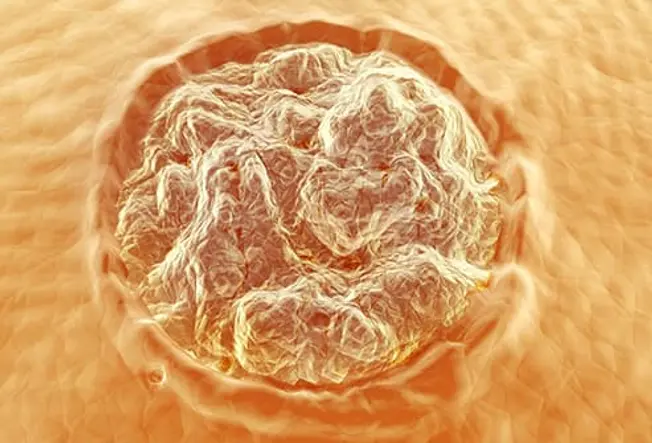
These small, noncancerous growths appear when your skin is infected with one of the many viruses of the human papillomavirus (HPV) family. The virus triggers extra cell growth, which makes the outer layer of skin thick and hard in that spot. While they can grow anywhere you have skin, you’re more likely to get one on your hands or feet. The type of wart depends on where it is and what it looks like.
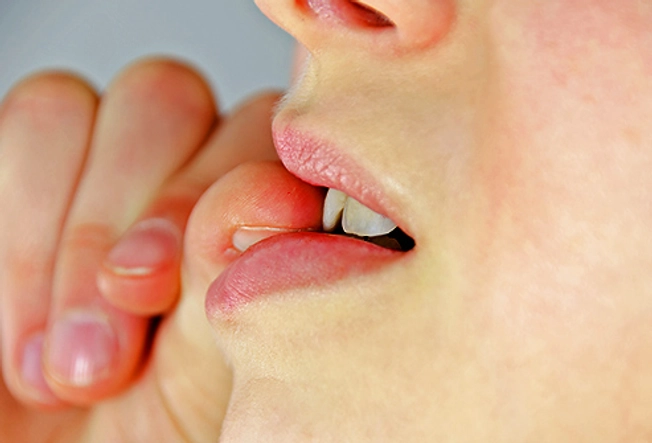
Who Gets Them?
2/21
Because each person’s immune system responds differently to the virus, not everyone who comes in contact with HPV will get a wart. And if you cut or damage your skin in some way, it’s easier for the virus to take hold. That’s why people with chronic skin conditions, such as eczema, or who bite their nails or pick at hangnails are prone to getting warts.

Your Body Plays Defense
3/21
Kids and teens get more warts than adults because their immune systems haven’t built up defenses against the many types of HPV. People with weakened immune systems — like those with HIV or who are taking biologic drugs for conditions like RA, psoriasis, and IBD — are also more susceptible to getting warts because their body may not be able to fight them off.
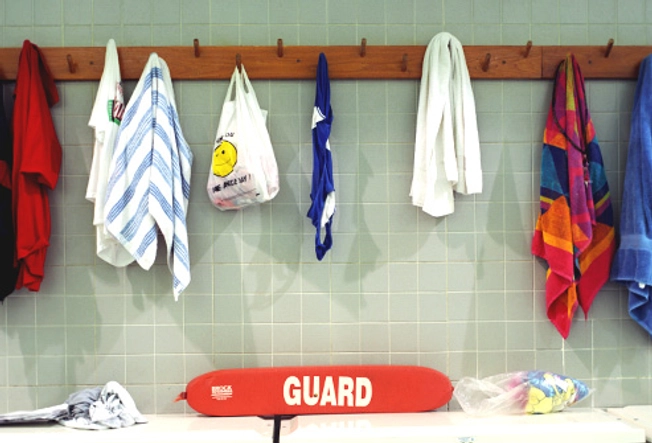
How They Spread
4/21
Warts are highly contagious and are mainly passed by direct skin contact, such as when you pick at your warts and then touch another area of your body. You can also spread them with things like towels or razors that have touched a wart on your body or on someone else’s. Warts like moist and soft or injured skin.
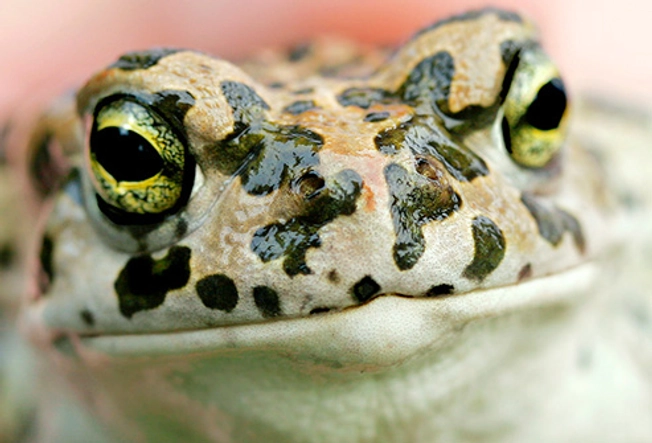
Fairy Tales Are Wrong
5/21
You can touch or kiss all the frogs and toads you like because they won’t give you warts.
Having a wart on your nose — or anywhere else, for that matter — doesn’t make you a witch, either.
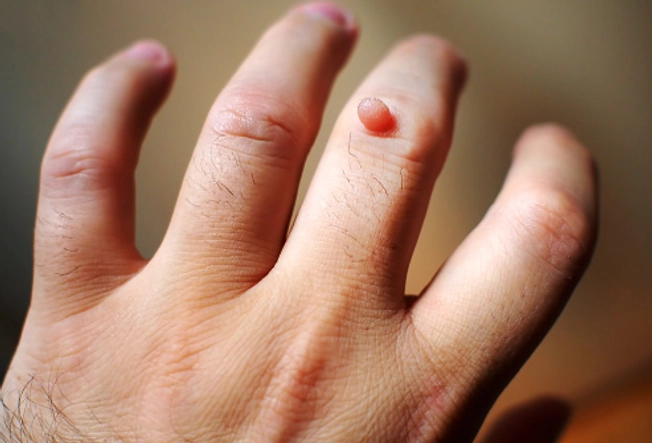
Common Warts
6/21
These flesh-colored growths are most often on the backs of hands, the fingers, the skin around nails, and the feet. They’re small — from the size of a pinhead to a pea — and feel like rough, hard bumps. They may have black dots that look like seeds, which are really tiny blood clots. Typically they show up where the skin was broken, perhaps from biting your fingernails. (This can also transfer the virus from your hands to your face.)
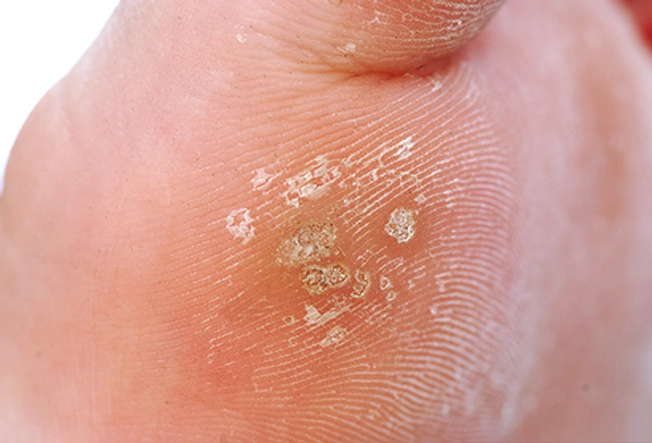
Plantar Warts
7/21
Does it feel like you have pebbles in your shoe? Check the soles of your feet. These warts got their name because “plantar” means “of the sole” in Latin. Unlike other warts, the pressure from walking and standing makes them grow into your skin. You may have just one or a cluster (called mosaic warts). Because they’re flat, tough, and thick, it’s easy to confuse them with calluses. Look for black dots on the surface.
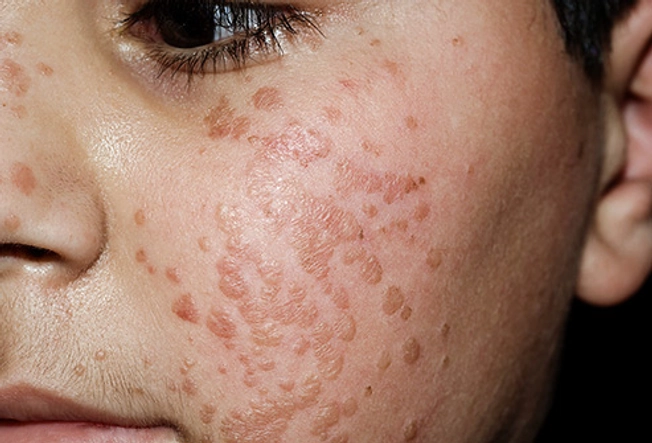
Flat Warts
8/21
The upside of these warts is that they’re smaller (maybe 1/8 inch wide, the thickness of the cord that charges your phone) and smoother than other types. The downside? They tend to grow in large numbers — often 20 to 100 at a time. Flat warts tend to appear on children’s faces, men’s beard areas, and women’s legs.
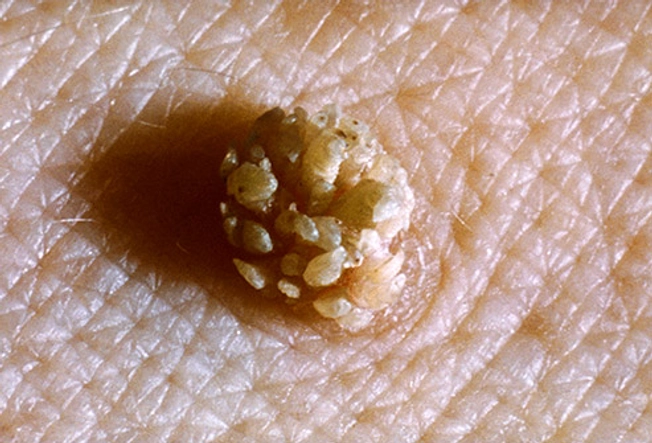
Filiform Warts
9/21
These fast-growing warts look thread-like and spiky, sometimes like tiny brushes. Because they tend to grow on the face — around your mouth, eyes, and nose — they can be annoying, even though they don’t usually hurt.
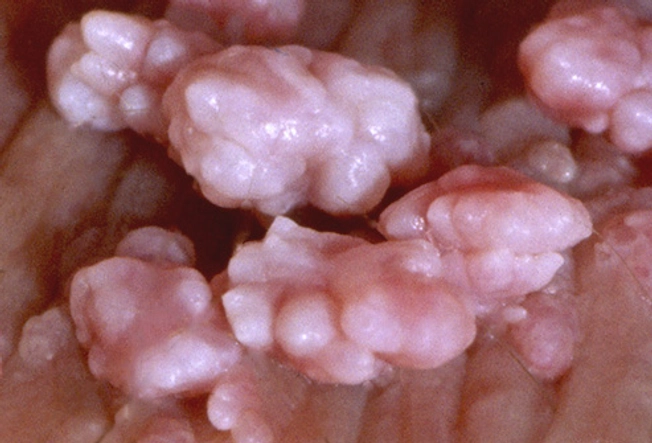
Genital Warts
10/21
As you might expect, you get these by having sex with someone who has them. They may look like small, scattered, skin-colored bumps or like a cluster of bumps similar to a little bit of cauliflower on your genitals. And they can spread, even if you can’t see them. Don’t try to get rid of genital warts yourself; they can be hard to treat.
Other types of HPV that could cause cancer may be passed sexually, too, including through oral and anal sex.

How Long They Last
11/21
Over time, your body will often build up a resistance and fight warts off. But it may take months or as many as 2 years for them to disappear. In adults, warts often stick around even longer, perhaps several years or more. Some warts won’t ever go away. Doctors aren’t sure why some do and others don’t.
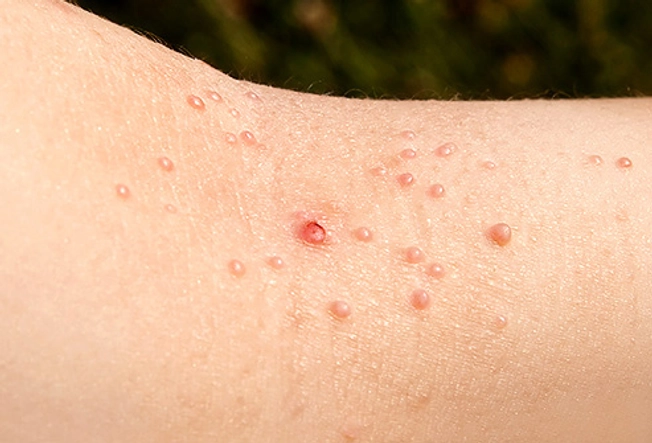
To Treat or Not to Treat?
12/21
Most warts are harmless, and you don’t need to do anything — unless, of course, they’re painful or embarrassing. Waiting for warts to go away could backfire, though: A wart might get bigger, new warts may appear, or you could give them to someone else. The best treatment depends on your age and health and the type of wart. But there’s no cure for HPV, so some of the virus might stay in your skin after the wart is gone and reappear later.
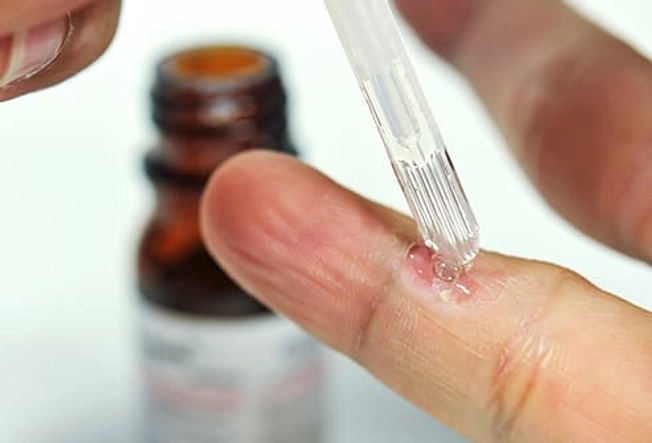
Peeling Products
13/21
Over-the-counter gels, liquids, and pads with salicylic acid work by peeling away the dead skin cells of the wart to gradually dissolve it. For better results, soak the wart in warm water, then gently sand it with a disposable emery board before you apply the product. Be sure to use a new emery board each time. Be patient — it can take several months.

Duct Tape
14/21
Yes, you may be able to get a remedy for warts at the hardware store! Study results are mixed, but covering warts with duct tape may peel away layers of skin and irritate it to kick-start your immune system. Soak, sand, and put duct tape on the area (use silver stuff because it’s stickier). Remove and re-do the process every 5-6 days until the wart is gone. If it works for you, the wart should be gone within 4 weeks.
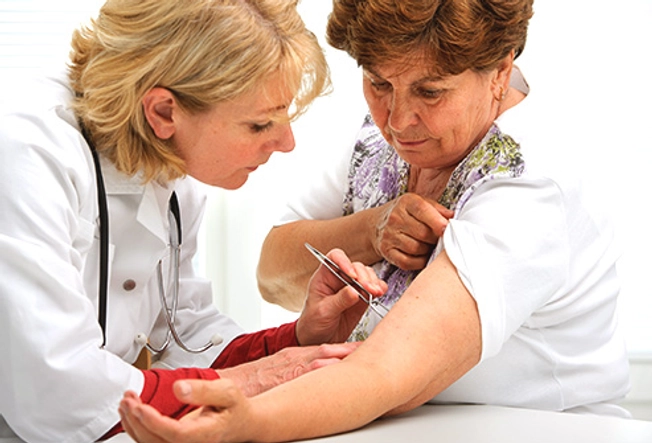
When to See the Doctor
15/21
If you’re not sure your skin growth is a wart (some skin cancers look like them), it doesn’t get better with home treatment, it hurts, or you have a lot of them, check with your doctor. If you have diabetes or a weakened immune system, you should have a doctor take a look before you treat a wart yourself.

Cryosurgery
16/21
For adults and older children with common warts, your doctor will likely want to freeze them off with liquid nitrogen. (Because the nitrogen is so cold, it can cause a stabbing pain for a little while, which is why it’s not used for small children.) You’ll probably need more than one session. It works better when you follow up with a salicylic acid treatment after the area heals. Cryosurgery can cause light spots on people who have dark skin.
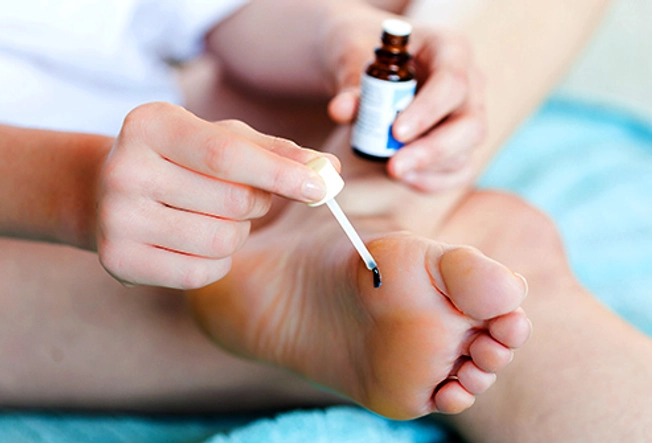
Cantharidin
17/21
“Painting” a wart with this liquid makes a blister form underneath it, lifting it off the skin. When the blister dries (after about a week), the wart comes off with the blistered skin. Cantharidin is often the way to treat young children because it doesn’t hurt at first, though it may tingle, itch, burn, or swell a few hours later.
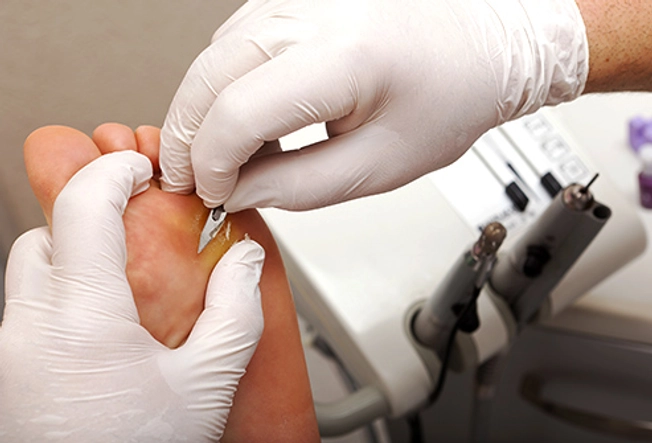
Burning and Cutting
18/21
Doctors may use one or both of these methods after they numb the area.
Electrosurgery burns the wart with an electric charge through the tip of a needle. It’s good for common warts, filiform warts, and foot warts. Your doctor could also use a laser.
Curettage is scraping off the wart with a sharp knife or small, spoon-shaped tool. Another option is excision, slicing the wart off or cutting it out with a sharp blade.
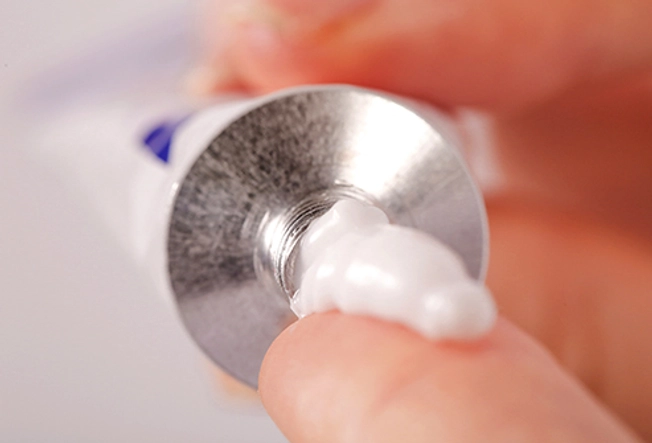
Prescription Creams
19/21
For stubborn warts, peeling creams with glycolic acid, stronger salicylic acid, or tretinoin could do the trick. Diphencyprone (DCP) and imiquimod (Aldara) irritate your skin to encourage your immune system to go to work there. 5-Fluorouracil is a cancer medicine that may stop your body from making extra skin cells the same way it stops tumors from growing.

Injections
20/21
Your doctor may use a needle to put medicine into the wart to help get rid of it. Bleomycin, a cancer drug, may stop infected cells from making more. Interferon boosts your immune system to better fight the HPV, typically for genital warts.
These usually aren’t the first things your doctor will try, and you may need to use salicylic acid or duct tape on your wart, too.

Stop the Spread
21/21
There’s no way yet to prevent warts, but you can lower your chances of getting or spreading them:
- Don’t touch, pick, or scratch your warts, or touch someone else’s.
- Wash your hands after treating warts.
- Keep foot warts dry.
- Wear waterproof sandals or flip-flops in public showers, locker rooms, and around public pools.
Show Sources
IMAGES PROVIDED BY:
- Thinkstock Photos
- Thinkstock Photos
- Getty Images
- Thinkstock Photos
- Thinkstock Photos
- Thinkstock Photos
- Science Source
- Science Source
- Science Source
- Science Source
- Thinkstock Photos
- Thinkstock Photos
- Thinkstock Photos
- Thinkstock Photos
- Thinkstock Photos
- Getty Images
- Science Source
- Thinkstock
- Thinkstock
- Thinkstock
- Thinkstock
American Academy of Dermatology: “Warts: Overview,” “Dermatologists share tips to treat common warts,” “Where warts come from.”
UpToDate: “Cutaneous warts (common, plantar, and flat warts),” “Patient education: Skin warts (Beyond the Basics).”
Mona Gohara, MD, clinical professor of dermatology, Yale School of Medicine.
Institute for Quality and Efficiency in Health Care: “Warts: Overview.”
JAMA Dermatology: “Witches and Warts.”
Cleveland Clinic: “Plantar Warts.”
University Health Service, University of Southampton: “Curettage and shave excision of raised skin lesions.”
DermNet New Zealand: “Bleomycin and the skin.”
BMC Infectious Diseases: “Interferon for the treatment of genital warts: a systematic review.”






